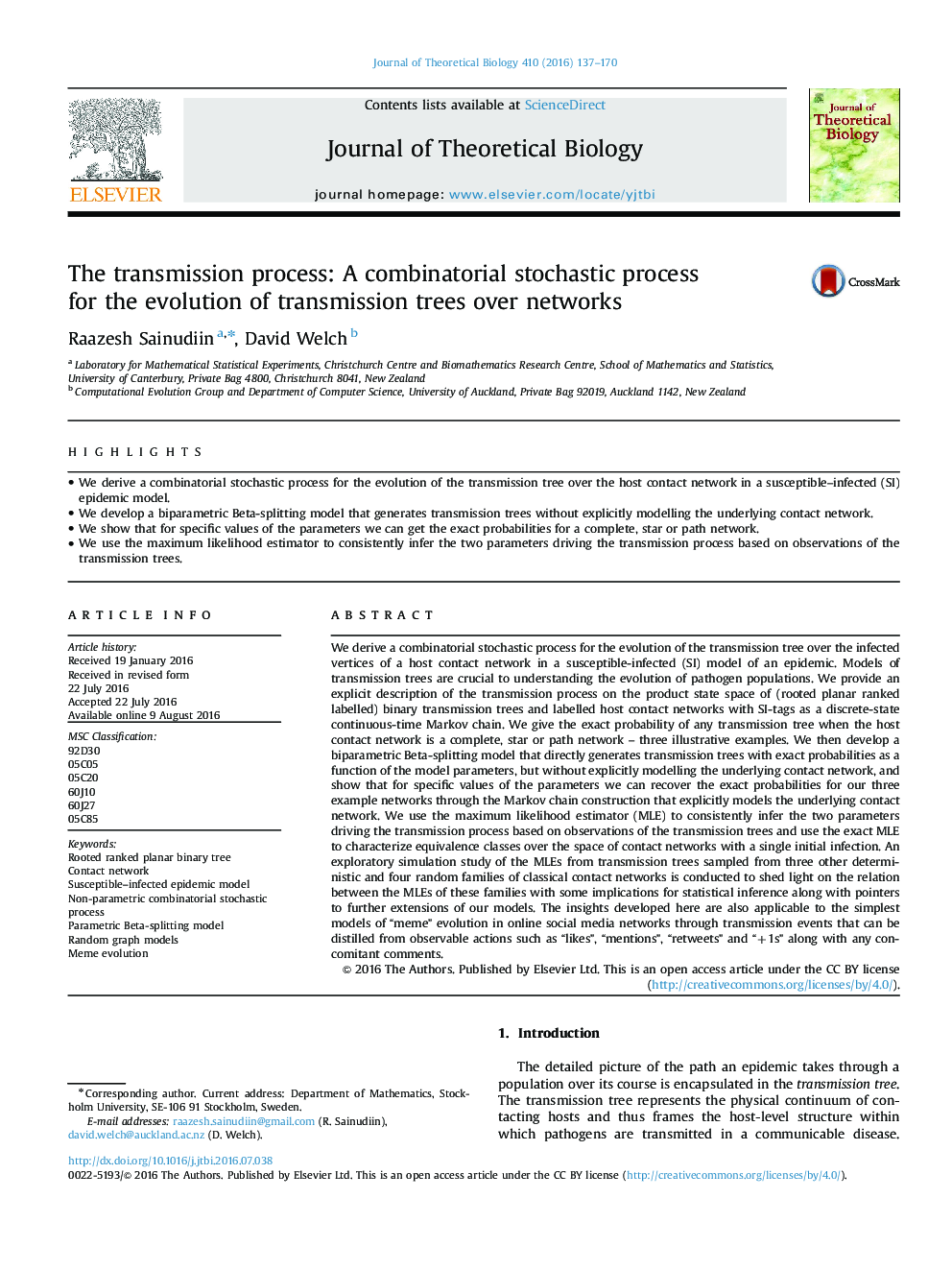| Article ID | Journal | Published Year | Pages | File Type |
|---|---|---|---|---|
| 6368853 | Journal of Theoretical Biology | 2016 | 34 Pages |
Abstract
We derive a combinatorial stochastic process for the evolution of the transmission tree over the infected vertices of a host contact network in a susceptible-infected (SI) model of an epidemic. Models of transmission trees are crucial to understanding the evolution of pathogen populations. We provide an explicit description of the transmission process on the product state space of (rooted planar ranked labelled) binary transmission trees and labelled host contact networks with SI-tags as a discrete-state continuous-time Markov chain. We give the exact probability of any transmission tree when the host contact network is a complete, star or path network - three illustrative examples. We then develop a biparametric Beta-splitting model that directly generates transmission trees with exact probabilities as a function of the model parameters, but without explicitly modelling the underlying contact network, and show that for specific values of the parameters we can recover the exact probabilities for our three example networks through the Markov chain construction that explicitly models the underlying contact network. We use the maximum likelihood estimator (MLE) to consistently infer the two parameters driving the transmission process based on observations of the transmission trees and use the exact MLE to characterize equivalence classes over the space of contact networks with a single initial infection. An exploratory simulation study of the MLEs from transmission trees sampled from three other deterministic and four random families of classical contact networks is conducted to shed light on the relation between the MLEs of these families with some implications for statistical inference along with pointers to further extensions of our models. The insights developed here are also applicable to the simplest models of “meme” evolution in online social media networks through transmission events that can be distilled from observable actions such as “likes”, “mentions”, “retweets” and “+1s” along with any concomitant comments.
Related Topics
Life Sciences
Agricultural and Biological Sciences
Agricultural and Biological Sciences (General)
Authors
Raazesh Sainudiin, David Welch,
